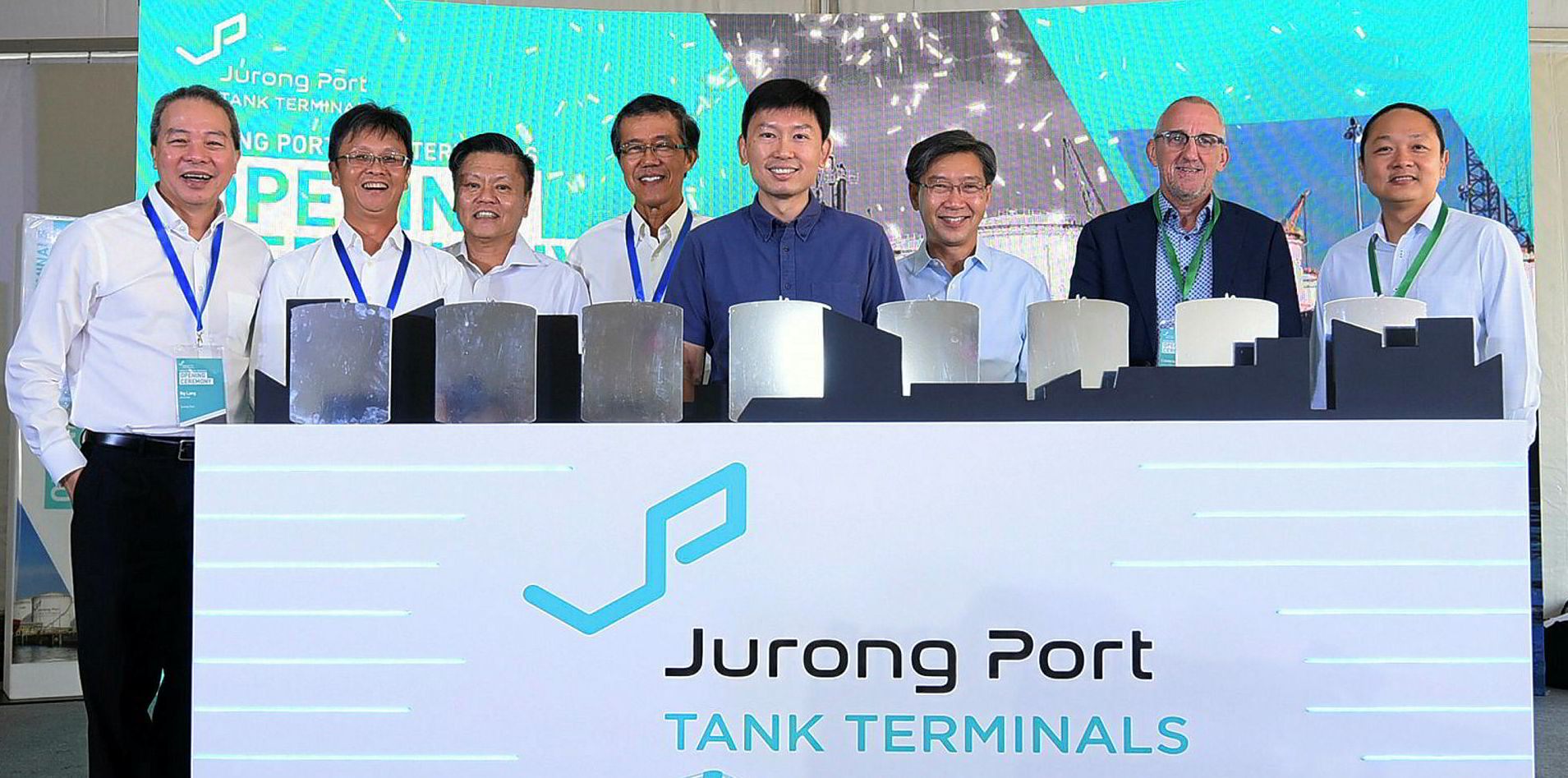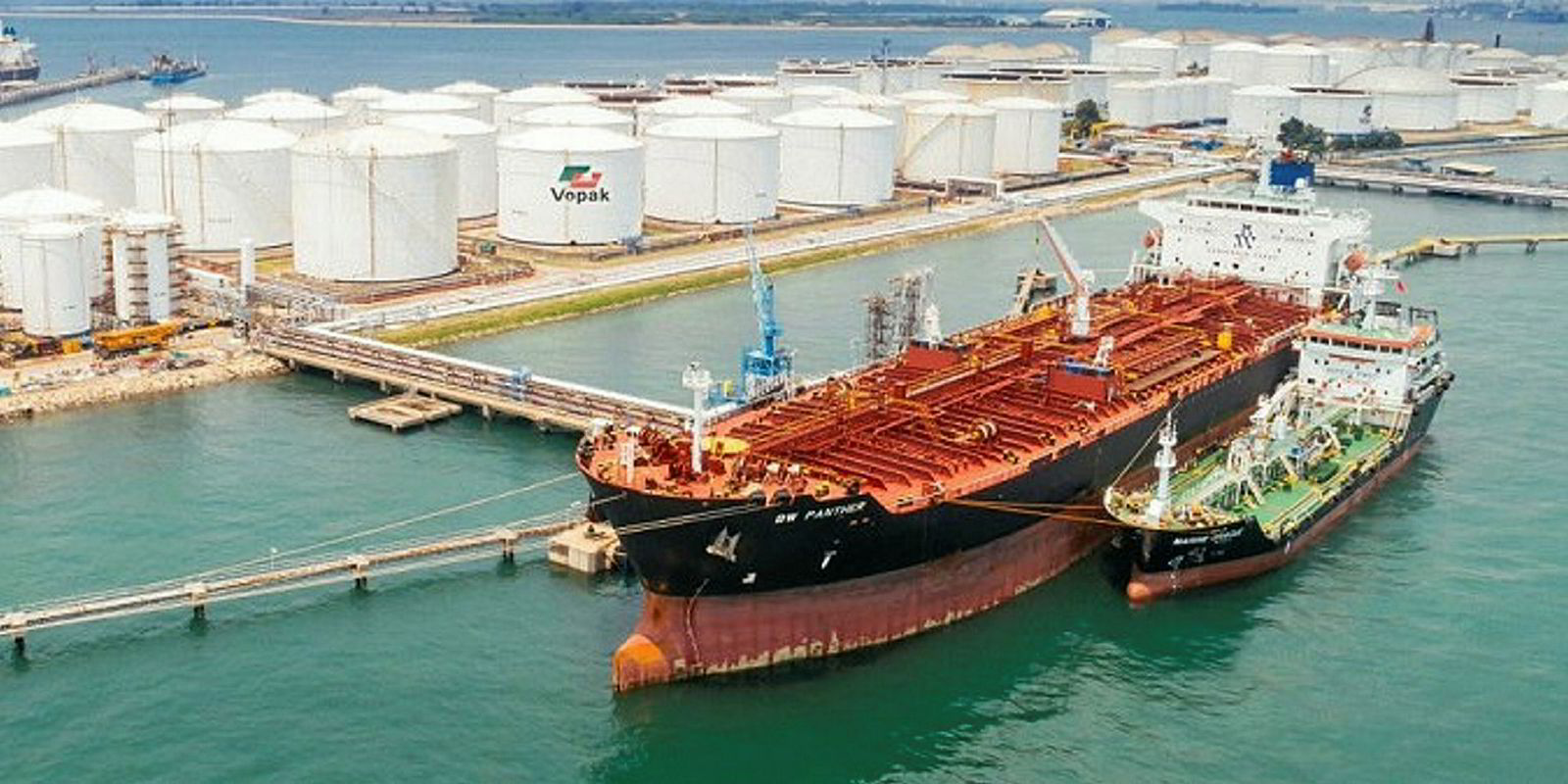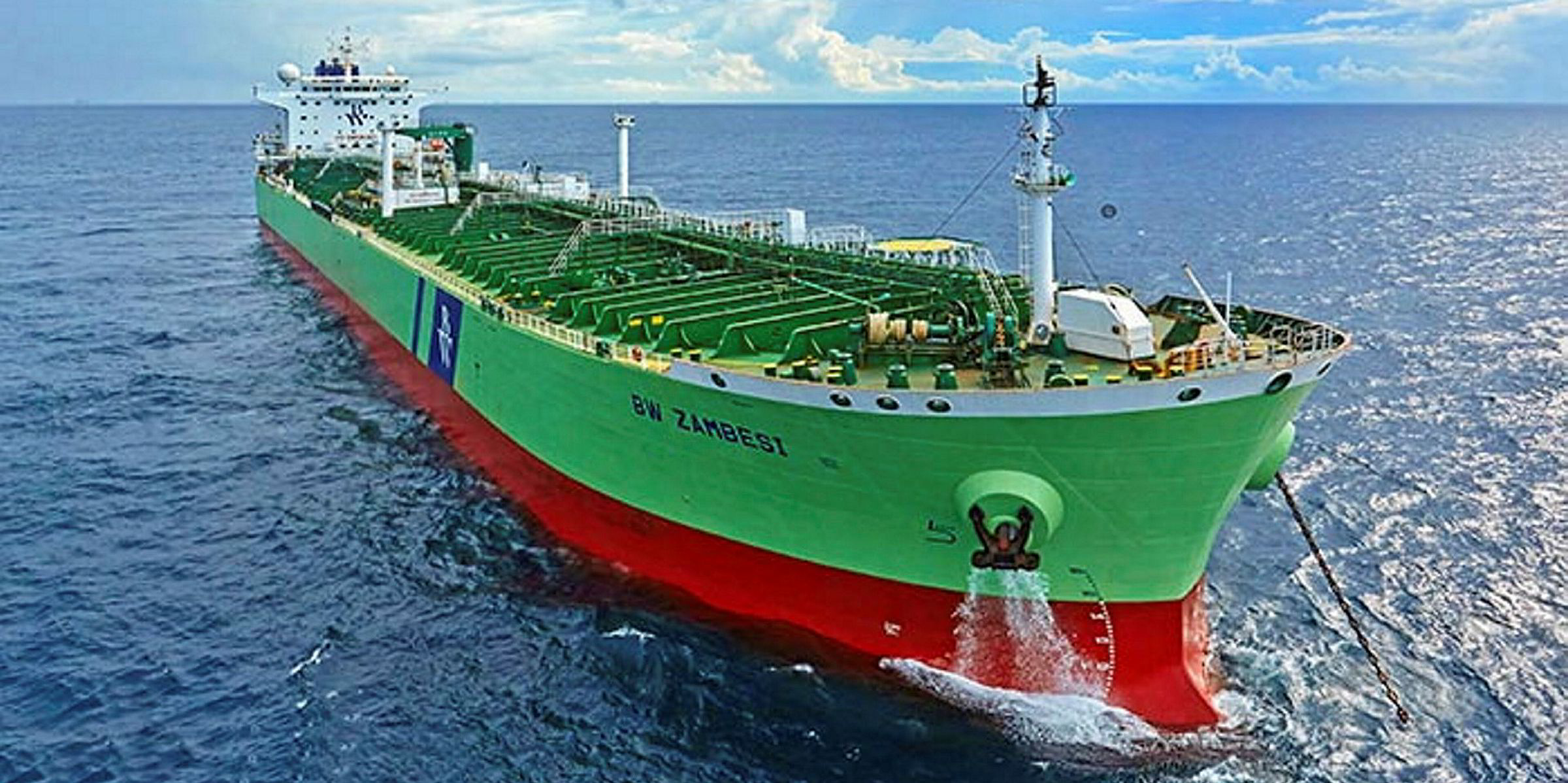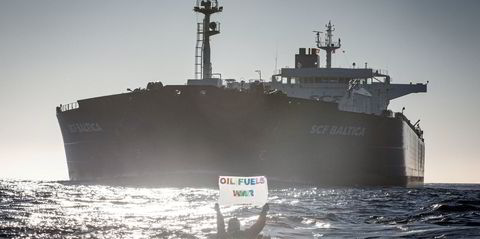Singapore’s Jurong Port has opened a new storage facility for clean low-sulphur petroleum just five months ahead of the IMO 2020 implementation.
Jurong Port Tank Terminals (JPTT), which has an initial capacity of 252,000 cubic metres, is a joint venture with Germany’s Oiltanking GmbH.
Speaking at the opening, Chee Hong Tat, Singapore’s senior minister of state, ministry of trade and industry said: “IMO 2020 provides opportunities for Singapore to enhance our position as one of the world’s top bunkering ports for low-sulphur fuels.
“JPTT is purpose-built to handle clean petroleum products, including bunker fuels that comply with IMO’s regulations.
“The terminal has dedicated clean storage capacity, automated valves, piggable jetty lines, and dedicated tank inlet and outlet lines to prevent contamination.”
JPTT began construction of Phase 1 in May 2017 and is expected to have total capacity of about 550,000 cubic metres of clean petroleum product storage upon completion of phase 2.
It is located on 16 hectares of land within Jurong Port and is supported by four deep water berths capable of handling up to suezmax-size tankers.
JPTT is expected to handle about seven million tons of clean petroleum product annually.
PetroChina, one of the world’s largest petroleum companies, has already signed up to be the anchor customer for phase 1 of JPTT.
JPTT is said to have been designed with a direct pipeline connection to Jurong Island’s petroleum and petrochemical network to optimise product transfers.
“This allows products to flow seamlessly between companies on Jurong Island, storage tanks at JPTT and ships berthed at the terminal,” said Jurong Port.
“Through this process, companies can enjoy up to 30% savings in transportation and handling costs with the pipeline connection, as they no longer need to charter vessels when transferring products from Jurong Island to Jurong Port.”
Jurong Island is the centrepiece of Singapore’s energy and chemicals industry, and is currently home to over 100 refineries, crackers, petrochemical and specialty chemicals manufacturers.
JPTT is also said to feature increased product transfer rates compared to older generation tank terminals.
Ship loading and unloading is said to be up to 50% faster due to the use of large capacity pumps and jetty arms.
These operational efficiencies are said to translate into reduced port stay times for ships and further cost savings for companies.
“This is a significant step for us as we move forward with our vision to become Singapore’s next generation multipurpose port,” said Jurong Port CEO Ooi Boon Hoe.
“The joint venture with Oiltanking will meet the demand for top quality and integrated storage infrastructure emerging from petrochemical product flows into Southeast Asia.”
Douglas van der Wiel, president of Oiltanking Asia Pacific said: “The need for supporting infrastructure to manage the increasing demand in Asia for petroleum products created the need for JPTT.
“The terminals will be able to handle the demand from the region and help strengthen the integrated terminal network concept and overall value offering to the market.
“This is the embodiment of Oiltanking’s vision for the Singapore Straits, reinforcing Singapore’s international maritime energy and chemicals hub status.”







